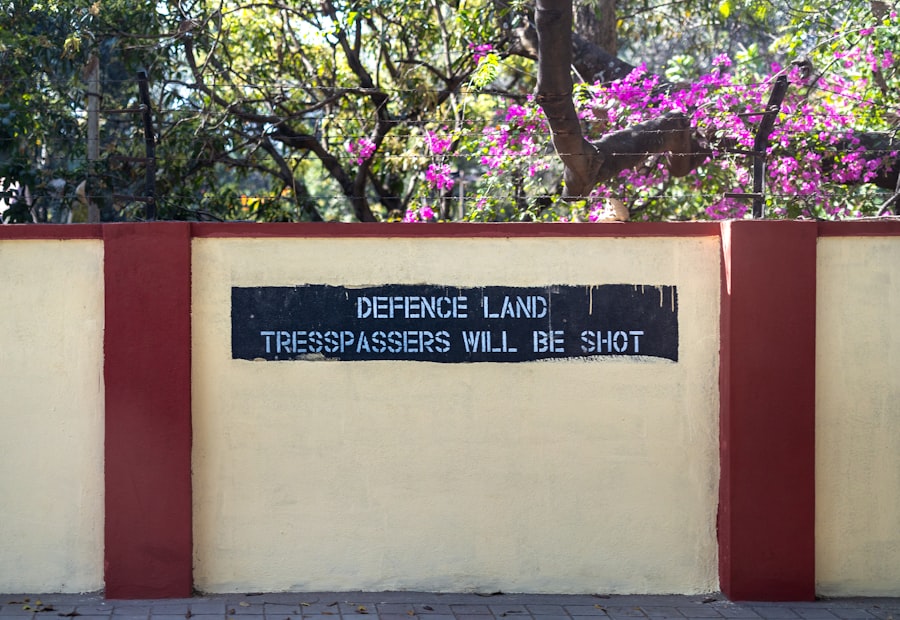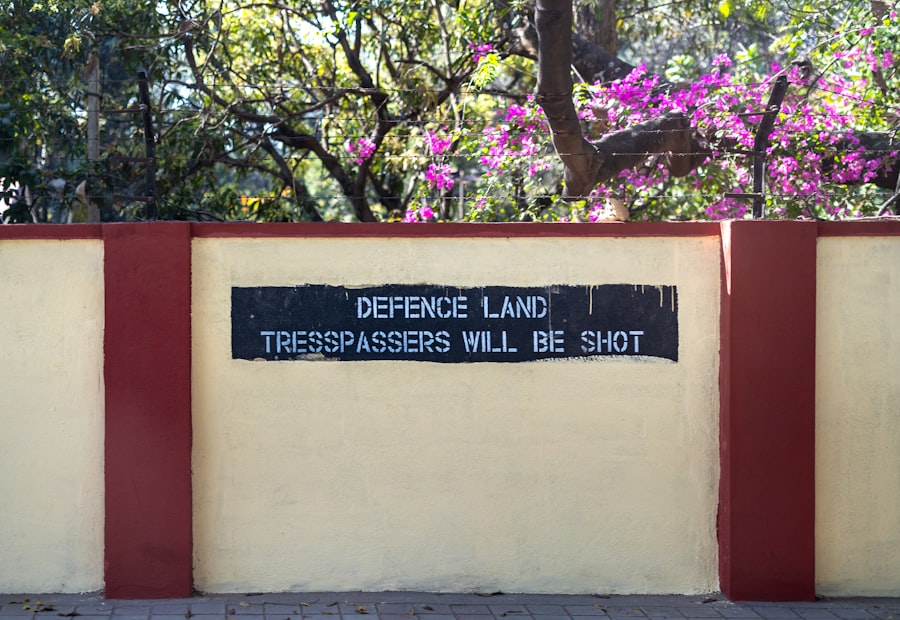Geography has long been recognized as a critical factor in shaping the dynamics of human conflict and defense strategies. The physical landscape, including mountains, rivers, and oceans, can serve as formidable barriers against invasions, while the strategic positioning of nations can dictate their military and diplomatic interactions. Understanding geography as a defense mechanism involves examining how natural features and human-made structures influence the security of nations and the outcomes of military engagements.
In an era where global tensions are on the rise, the significance of geography in defense planning cannot be overstated. The interplay between geography and defense is not merely a historical curiosity; it remains a vital consideration for contemporary military strategists and policymakers. As nations navigate complex geopolitical landscapes, they must account for the geographical realities that shape their security environment.
Key Takeaways
- Geography plays a crucial role in defense strategies, shaping military campaigns and national security.
- Natural barriers such as mountains, rivers, and oceans provide significant defense advantages.
- Strategic positioning in key locations is essential for defense and security.
- Historical examples demonstrate how geography has influenced military campaigns and outcomes.
- Modern applications of geography in defense include utilizing technology to overcome geographic limitations.
Natural Barriers: Mountains, Rivers, and Oceans
Natural barriers have historically played a pivotal role in shaping the defense capabilities of nations. Mountains, for instance, can create formidable obstacles for invading armies, providing a natural defense that is difficult to breach. The Himalayas, which separate India from its northern neighbors, have not only influenced military campaigns but have also shaped cultural and political boundaries.
Similarly, the rugged terrain of the Alps has historically served as a protective shield for Italy and Switzerland, allowing these nations to maintain their sovereignty against larger powers. Rivers and oceans also serve as significant natural barriers that can deter invasions. The vast expanse of the Atlantic Ocean has historically provided a buffer for the United States against European conflicts, allowing it to develop its own identity and military strength without immediate threat from overseas adversaries.
Rivers like the Rhine have acted as both defensive lines and strategic routes for trade and military movement, influencing the outcomes of numerous conflicts throughout history. These natural features not only provide physical protection but also shape the strategic thinking of military leaders who must consider these elements when planning operations.
Strategic Positioning: The Importance of Location

The strategic positioning of a nation can significantly impact its security and defense capabilities. Countries located at crossroads of trade routes or near vital maritime passages often find themselves at the center of geopolitical tensions. For example, the Suez Canal in Egypt is a critical chokepoint for global trade, making it a focal point for military interest and intervention throughout history.
Nations that control such strategic locations can exert considerable influence over international trade and military movements. Moreover, the importance of location extends beyond mere geography; it encompasses political alliances and regional dynamics. Countries situated near potential adversaries must develop robust defense strategies to counter threats while leveraging their geographic advantages.
For instance, Israel’s location in the Middle East necessitates a strong military posture due to its proximity to several hostile neighbors. The interplay between geography and strategic positioning underscores the necessity for nations to adapt their defense policies in response to their unique geographic circumstances.
Historical Examples: How Geography Shaped Military Campaigns
| Location | Impact on Military Campaigns |
|---|---|
| Athens, Greece | The mountainous terrain made it difficult for invaders to attack, contributing to the strength of the Athenian military. |
| Waterloo, Belgium | The marshy ground affected the movement of troops and played a significant role in the outcome of the battle. |
| Normandy, France | The beaches and hedgerows presented challenges for the D-Day landings and subsequent military operations. |
| Stalingrad, Russia | The harsh winter conditions and urban environment influenced the tactics and strategies employed by both sides. |
Throughout history, geography has been a decisive factor in military campaigns, influencing both strategy and outcomes. The Napoleonic Wars provide a compelling example of how terrain can dictate military success or failure. Napoleon Bonaparte’s ill-fated invasion of Russia in 1812 was significantly hampered by the harsh winter conditions and vast distances that characterized the Russian landscape.
The combination of geography and climate led to devastating losses for his army, illustrating how environmental factors can undermine even the most well-planned military operations. Another historical example is the use of geography during World War
The German invasion of the Soviet Union was initially successful due to rapid advances across open terrain; however, as they moved deeper into Soviet territory, they encountered harsh winters and vast distances that stretched their supply lines thin. The geography of Russia ultimately played a crucial role in the Soviet Union’s ability to regroup and launch counteroffensives that would turn the tide of the war. These examples highlight how geography not only shapes military strategies but can also determine the fate of nations in conflict.
Modern Applications: Utilizing Geography for National Security

In contemporary times, nations continue to leverage geographic advantages to enhance their national security. The use of satellite imagery and geographic information systems (GIS) has revolutionized how military planners assess terrain and plan operations. By analyzing geographic data, nations can identify vulnerabilities in their defenses and develop strategies to mitigate potential threats.
This technological advancement allows for more precise planning and execution of military operations, taking into account the complexities of modern warfare. Furthermore, modern military strategies often incorporate geographic considerations into their broader defense frameworks. For instance, countries may establish forward operating bases in strategically advantageous locations to project power and respond quickly to emerging threats.
The United States’ presence in various regions around the world exemplifies this approach, as it seeks to maintain a global footprint that allows for rapid response capabilities while deterring potential adversaries. By understanding and utilizing geography effectively, nations can enhance their security posture in an increasingly complex global landscape.
Urban Geography: The Role of Cities in Defense
Urban geography plays a crucial role in contemporary defense strategies as cities become focal points for both conflict and security planning. The concentration of populations and infrastructure in urban areas presents unique challenges for military operations. Cities often serve as battlegrounds where conventional warfare meets asymmetric tactics employed by insurgent groups.
The dense urban environment complicates traditional military strategies, requiring forces to adapt to new forms of warfare that prioritize civilian safety while achieving military objectives. Moreover, cities are not only battlegrounds but also critical centers for logistics and supply chains. Control over urban areas can provide access to vital resources and transportation networks essential for sustaining military operations.
For example, during conflicts in Iraq and Afghanistan, control over key cities allowed military forces to secure supply routes and maintain operational effectiveness. As urbanization continues to rise globally, understanding urban geography will be paramount for nations seeking to defend their interests in increasingly populated environments.
Climate and Terrain: Adapting to Environmental Challenges
The interplay between climate and terrain presents significant challenges for national defense strategies. As climate change continues to alter weather patterns and environmental conditions, nations must adapt their military capabilities accordingly. For instance, rising sea levels threaten coastal installations and infrastructure, necessitating a reevaluation of defense strategies in vulnerable regions.
Additionally, extreme weather events such as hurricanes or droughts can disrupt supply chains and impact troop readiness. Terrain also plays a critical role in shaping military operations. Mountainous regions may require specialized training for troops to navigate effectively, while desert environments demand different logistical considerations compared to temperate climates.
Nations must invest in understanding these environmental challenges to ensure their forces are prepared for diverse operational contexts. By adapting to climate and terrain variations, countries can enhance their resilience against potential threats while safeguarding their national security interests.
Geopolitics: The Influence of Geography on International Relations
Geography profoundly influences international relations by shaping alliances, conflicts, and diplomatic interactions among nations. Countries with shared borders often find themselves entangled in complex geopolitical dynamics that can lead to cooperation or conflict. For instance, nations in regions with scarce resources may compete fiercely over access to water or energy supplies, leading to tensions that can escalate into armed conflict.
Furthermore, geographic considerations often dictate foreign policy decisions as nations seek to secure their interests on the global stage. The South China Sea serves as a prime example of how geography influences international relations; its strategic waterways are vital for global trade but are also contested by multiple nations claiming territorial rights. As countries navigate these geopolitical landscapes, they must consider how geography shapes not only their security strategies but also their diplomatic engagements with other states.
Technological Advances: Overcoming Geographic Limitations
Technological advancements have transformed how nations approach geographic limitations in defense planning. Innovations such as drones, satellite surveillance, and advanced communication systems enable militaries to overcome traditional geographic barriers that once constrained operational capabilities. For instance, unmanned aerial vehicles (UAVs) allow for reconnaissance missions in difficult-to-access areas without putting personnel at risk.
Moreover, advancements in transportation technology have facilitated rapid troop movements across vast distances, enabling forces to respond swiftly to emerging threats regardless of geographic constraints. The ability to project power globally has reshaped military strategies, allowing nations to maintain a presence in regions far from their borders while adapting to diverse operational environments. As technology continues to evolve, its integration with geographic considerations will remain essential for effective national defense.
Environmental Security: Protecting Natural Resources and Landscapes
Environmental security has emerged as a critical aspect of national defense strategies as nations recognize the importance of protecting natural resources and landscapes from threats such as climate change and resource depletion. Access to clean water, arable land, and energy resources is increasingly viewed as vital for maintaining national security. As competition for these resources intensifies globally, countries must develop strategies to safeguard their environmental assets while addressing potential conflicts arising from resource scarcity.
Additionally, environmental degradation poses risks not only to ecosystems but also to human populations living in vulnerable areas. Nations must consider how environmental factors impact social stability and security when formulating defense policies. By prioritizing environmental security alongside traditional defense measures, countries can create more comprehensive strategies that address both immediate threats and long-term sustainability challenges.
Embracing Geography for Defense in the 21st Century
In conclusion, geography remains an indispensable element of national defense strategies in the 21st century. From natural barriers that provide protection against invasions to urban environments that shape modern warfare dynamics, understanding geographic factors is crucial for effective military planning and execution. As nations navigate an increasingly complex global landscape marked by geopolitical tensions and environmental challenges, they must embrace geography as a fundamental component of their defense frameworks.
By leveraging technological advancements and adapting to changing environmental conditions, countries can enhance their resilience against potential threats while safeguarding their national interests. Ultimately, recognizing the profound influence of geography on defense will empower nations to navigate the complexities of modern security challenges more effectively while fostering cooperation among states facing shared geographic realities.
Geography has long been considered a crucial factor in national defense, providing natural barriers and strategic advantages that can deter or delay potential aggressors. An article that delves into this topic is available on MyGeoQuest, which explores how geographical features such as mountains, rivers, and coastlines have historically served as formidable defenses for nations. The article highlights examples from various regions around the world, illustrating how geography can shape military strategies and influence the outcomes of conflicts. For a deeper understanding of how geography plays a pivotal role in defense strategies, you can read more about it in this related article.
WATCH THIS! The Hidden Reason No One Can Invade America | A Geographical Analysis
FAQs
What is geography’s role in defense?
Geography plays a crucial role in defense as it can act as a natural barrier, making it difficult for enemies to access certain areas. It can also influence the tactics and strategies used in military operations.
How does geography act as a natural defense?
Geography can act as a natural defense through features such as mountains, rivers, and oceans, which can hinder the movement of military forces and make it challenging for an enemy to invade or attack a particular area.
What are some examples of geography being used as a defense?
Examples of geography being used as a defense include the Himalayan mountain range acting as a natural barrier for India, and the English Channel providing protection for the United Kingdom during various conflicts.
How does geography influence military strategies?
Geography influences military strategies by shaping the way military forces move, communicate, and engage with the enemy. It can also impact the choice of weapons and tactics used in a particular geographical area.
Can geography be overcome as a defense?
While geography can act as a significant defense, it is not insurmountable. Advancements in technology and military tactics have allowed for the overcoming of geographical barriers to some extent.
